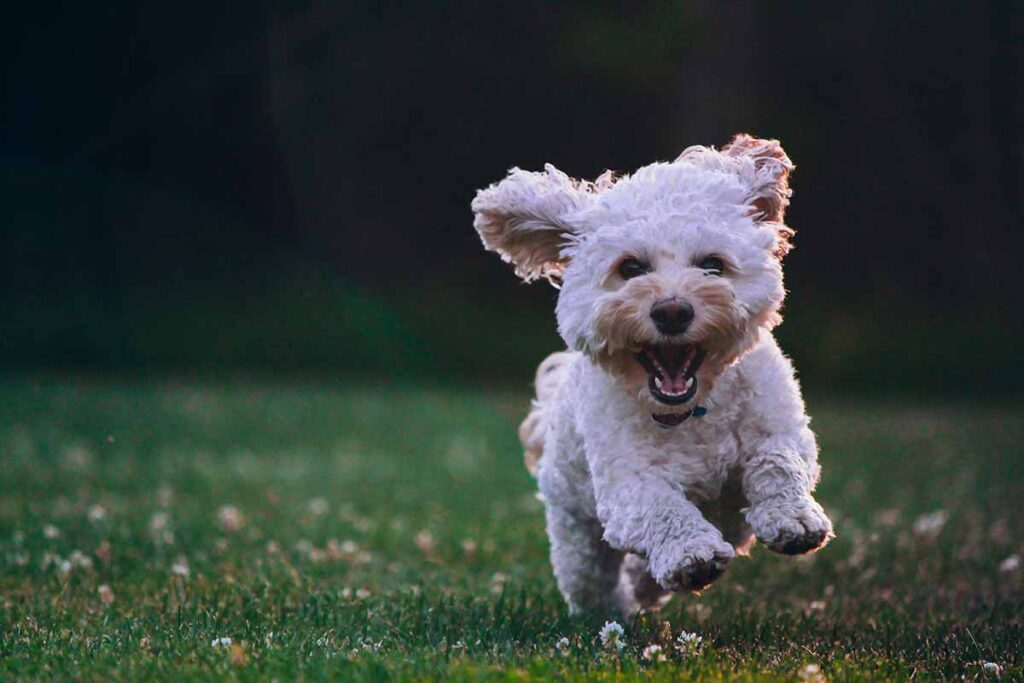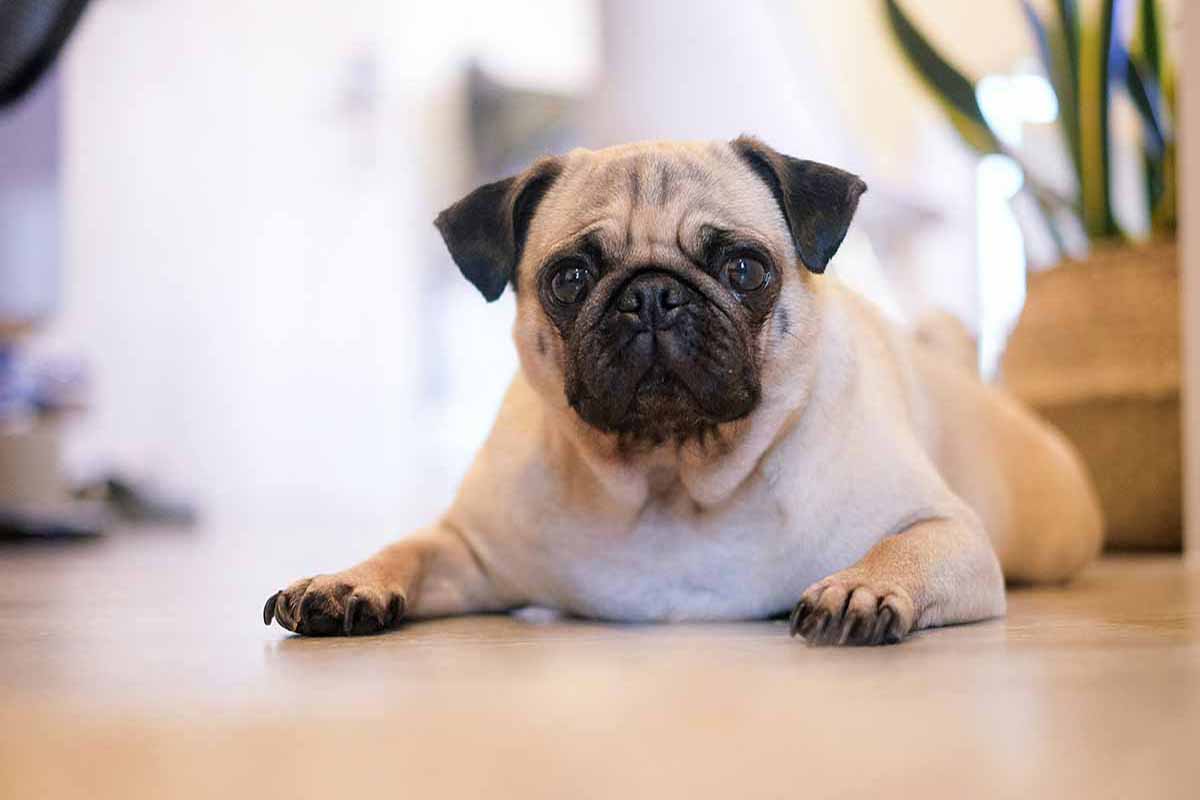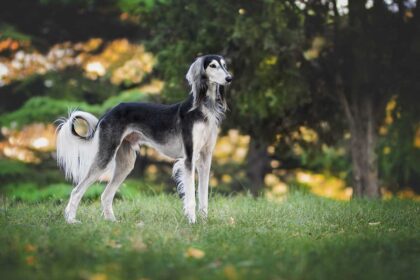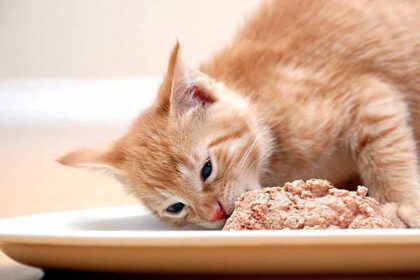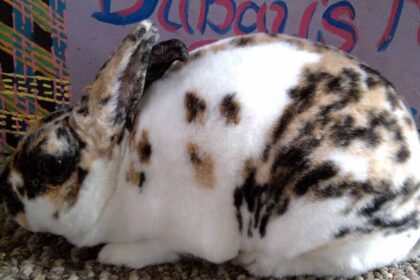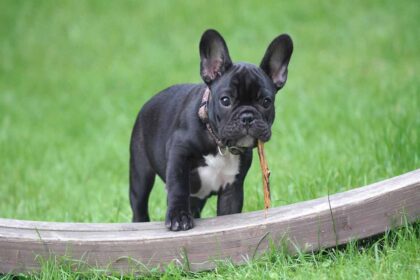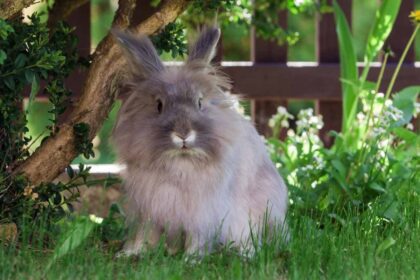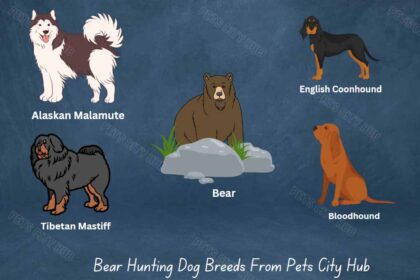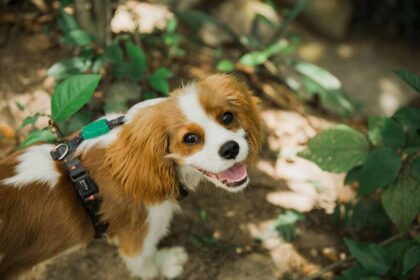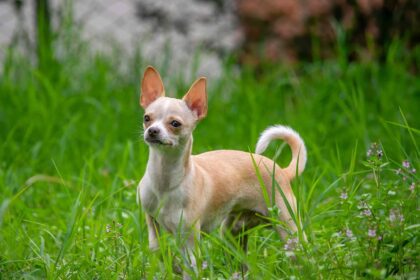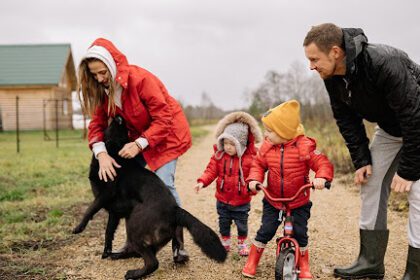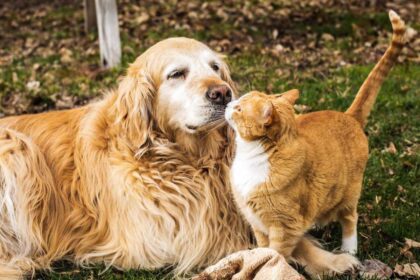The allure of small dog breeds is undeniable. From apartment-friendly cuddle buddies to adventure-ready companions, these compact cuties come in a delightful variety to suit every lifestyle. But with so many breeds to choose from, finding the perfect furry friend can feel overwhelming. Worry not, fellow dog-lover, for I’m here to guide you through 10 fantastic small dog breeds, each a potential paw-fect match for your unique life.
Cavalier King Charles Spaniel
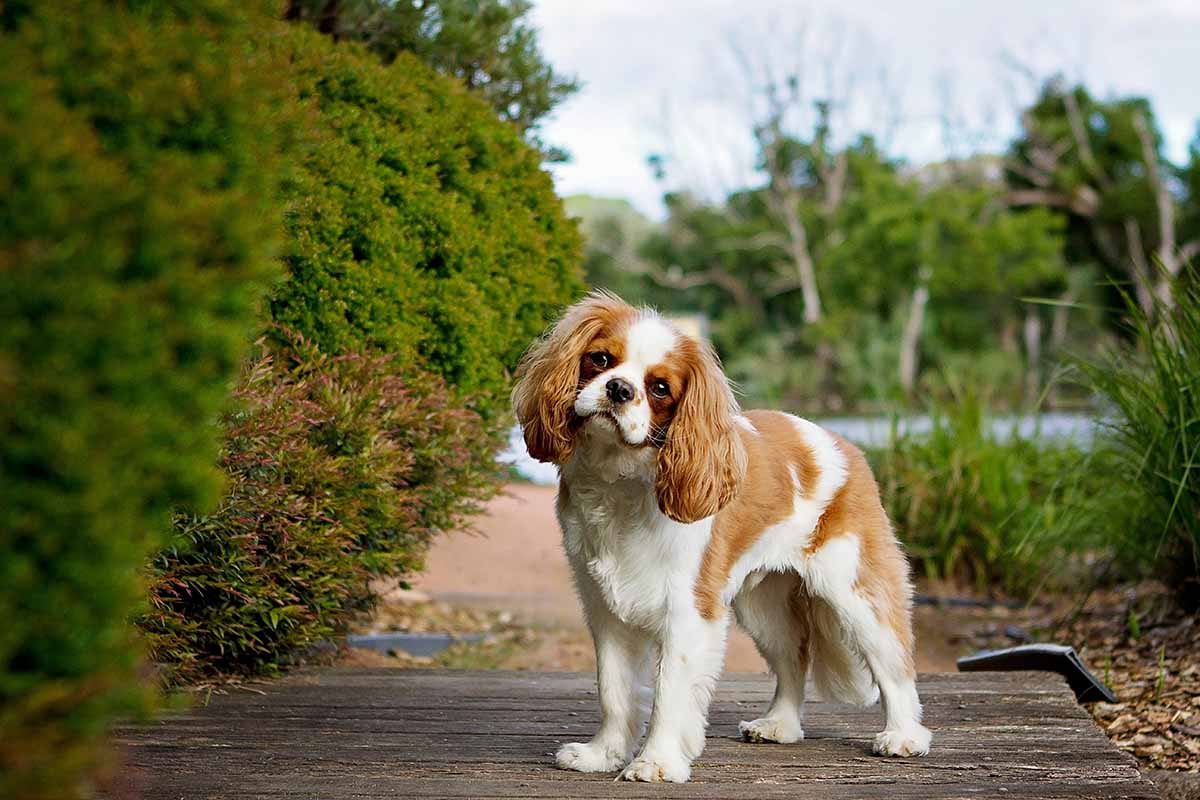
Imagine a gentle, affectionate soul with eyes that melt your heart and a wagging tail that speaks volumes. That’s the Cavalier King Charles Spaniel, a small spaniel dog breeds renowned for its endless cuddles and playful spirit. These charmers thrive in family settings, showering everyone with love and participating in games with boundless enthusiasm. While relatively easy to train, their long, silky coat demands moderate grooming attention.
- Temperament: Playful, loving, and gentle. These social butterflies like spending time with their families and thriving in human company.
- Exercise: Moderately active. Daily walks (about 30 minutes) and playtime are recommended. These active pups like walks, but because to their small stature, they should avoid intense activity.
- Grooming: Requires moderate brushing (2-3 times a week) to prevent matting. Their long, silky fur can tangle easily, so regular brushing is crucial to maintain their healthy coat.
Fun Fact: Cavalier King Charles Spaniels were once known as the “comforter dog” due to their tendency to curl up on laps and provide comfort. They were popular companions of royalty and nobility in Europe, and King Charles II of England was particularly fond of the breed.
Pug
Prepare for wrinkles, snorts, and a whole lot of laughter! Pugs are clownish bundles of joy with infectious personalities. Their playful nature and unwavering loyalty make them excellent companions for families and individuals alike. Despite their energetic bursts, pugs are generally content with low to moderate exercise, happily lounging around the house after playtime. However, their brachycephalic (flat-faced) features require special attention to breathing and eye health.
- Temperament: The temperament of a Pug is affectionate, charming, and mischievous. They’re recognized for their playful disposition and enjoy being the focus of attention. Pugs are social dogs that enjoy the company of their family members and have a knack for making everyone around them smile with their quirky antics.
- Exercise: Your Pug will require up to an hour of exercise each day. This should include shorter walks, additional playtime, and a variety of brain-stimulating activities. Several small walks throughout the day can help keep them from being tired or overheated, which is an excellent approach to keep them active all day.
- Grooming: Grooming the fur every 1 to 3 days. Cleaning the eye area daily. Cleaning the ears: Massaging the ear flaps several times per week, and cleaning the ear canals every 6 weeks. Paw care every 2 weeks.
Fun Fact: Pugs have wrinkled faces because Chinese breeders purposely bred them that way. They intended to produce a pattern of wrinkles on the dogs’ foreheads that resembled the Chinese symbol for “prince.”
Boston Terrier
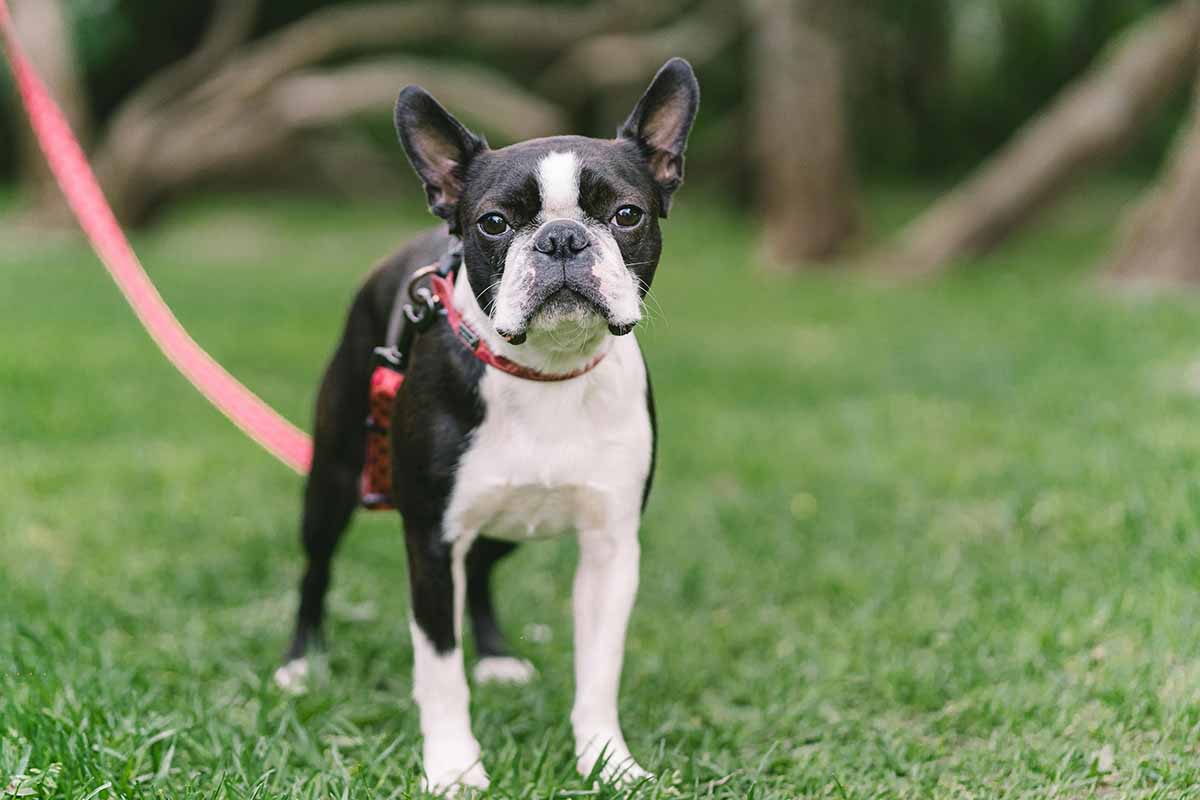
A tuxedo-clad charmer with a mischievous twinkle in its eye, the Boston Terrier is a delightful mix of intelligence, friendliness, and playfulness. This active breed thrives on walks, fetch sessions, and even agility courses, making them ideal for sporty pet parents. Bostons are relatively low-maintenance in terms of grooming, but their short coat tends to shed, so be prepared for some fur tumbleweeds.
- Temperament: Boston Terriers are affectionate and friendly companions known for their lively personalities and gentle disposition. They flourish with human interaction and are keen to please, making them outstanding family companions. Despite their small size, Boston Terriers are confident and spirited, with a playful nature that endears them to people of all ages.
- Exercise: Despite their compact size, Boston Terriers have moderate exercise needs of approximately 50 minutes per day. Boston Terriers, like any other breed, benefit from daily exercise, so try dividing it up into a few walks.
- Grooming: Grooming for Boston Terriers typically involves regular brushing to minimize shedding and maintain their sleek coats. They require occasional baths to keep them clean and smelling fresh, focusing on their wrinkles and ears. Nail trimming and dental care are also important aspects of Boston Terrier grooming to ensure their overall health and well-being.
Fun Fact: Bostons have been called other names. Some people still call them Boston bulls.They were previously known as American bull terriers, but owners of bulldogs and bull terriers objected, and in 1891, the Boston’s official name was changed to the Boston terrier. The American Kennel Club accepted the breed in 1893.
French Bulldog
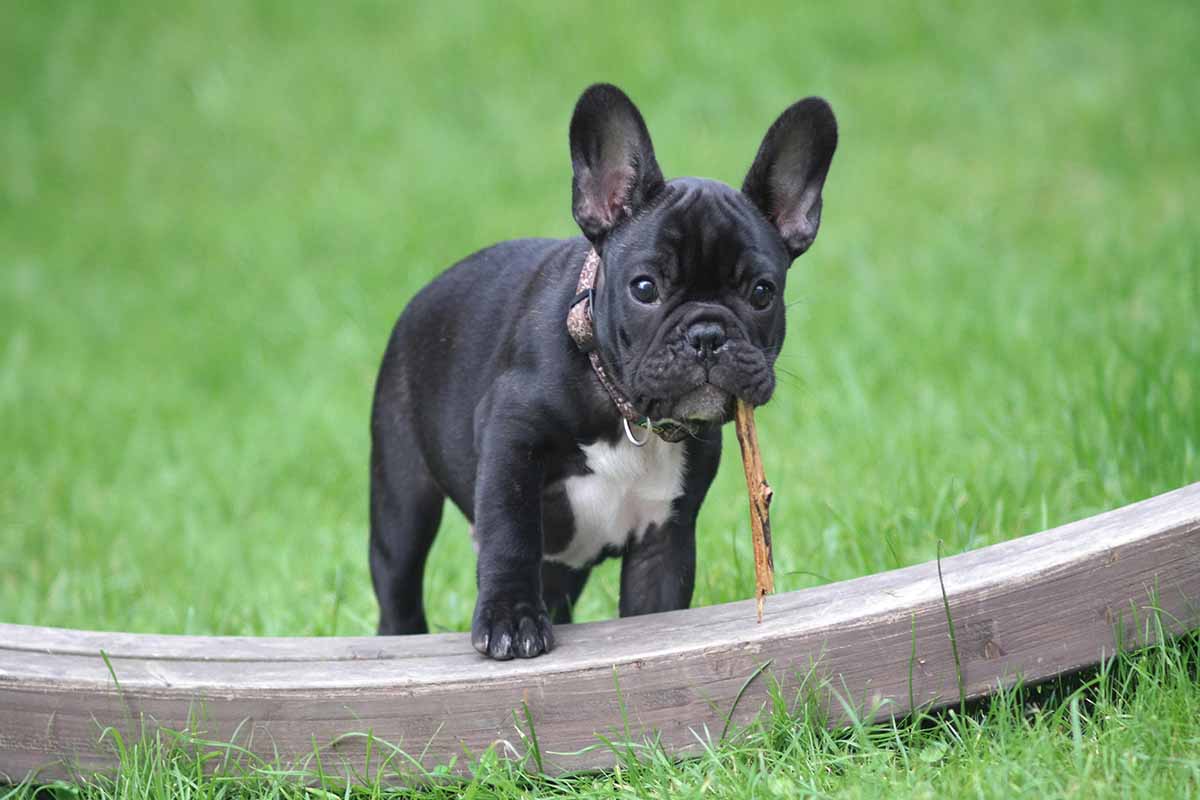
Meet the epitome of laid-back cuteness – the French Bulldog. These bat-eared charmers are affectionate cuddle monsters with a calm, adaptable nature. Frenchies are perfectly content with apartment living, requiring only moderate exercise to stay happy. Their short, smooth coat is a breeze to groom, and their playful, yet easygoing personality makes them perfect companions for busy individuals and relaxed families alike.
- Temperament: The French Bulldog is known for its affectionate and playful temperament. They are loyal companions who thrive on human interaction and love being part of the family. Despite their small size, they have a big personality, often described as comical and entertaining. French Bulldogs are generally good-natured and get along well with children and other pets, making them excellent family pets.
- Exercise: Enjoy short walks to keep your Frenchie active. Aim for 20-30 minute walks, particularly during the cooler periods of the day. Tips: Keep your Frenchie entertained with interactive toys or play fetch in a safe, contained location. Use toys that are suited to their size.
- Grooming: Grooming for French Bulldogs typically involves regular brushing to remove loose hair and dirt, especially in their short coat. They require occasional baths to keep their skin clean and healthy, focusing on folds and wrinkles. Additionally, trimming their nails, cleaning their ears, and brushing their teeth regularly help maintain their overall hygiene and well-being.
Fun Fact: With a playful spirit, love of entertaining, and tendency to snort, French Bulldogs have earned the nickname “clown dogs.” Their distinctive bat-like ears are pretty amusing, too! Of course, our Frenchie buddies have a reputation as a high-class breed.
Bichon Frise
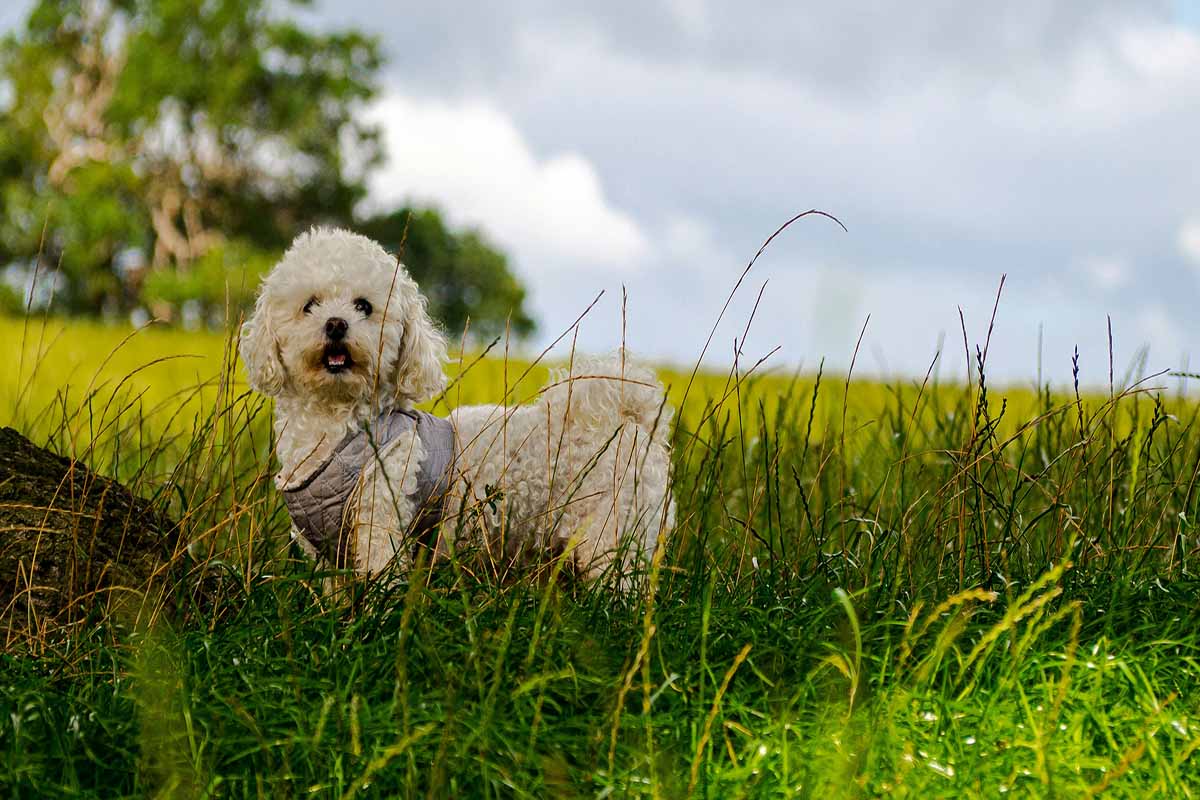
Picture a fluffy white cloud with a perpetual grin – that’s the Bichon Frise. These cheerful bundles of fluff are renowned for their gentle, loving nature and infectious zest for life. Bichons thrive on human interaction and make excellent therapy dogs due to their empathetic nature. However, their hypoallergenic, double coat demands regular brushing and professional grooming to maintain its pristine beauty.
- Temperament: The Bichon Frise is known for its cheerful and affectionate temperament, making it a delightful companion for families and individuals alike. These small dogs are playful, outgoing, and thrive on human interaction, making them excellent pets for households of all sizes. Bichon Frises are also known for their intelligence and eagerness to please, which makes them relatively easy to train. Additionally, their friendly disposition and gentle nature make them great companions for children and other pets.
- Exercise: Bichon Frises are active tiny dogs who need frequent exercise to keep healthy and happy. Daily walks, interactive play sessions, and exercises like fetch or agility training are all necessary to meet their fitness requirements. These activities not only help them stay physically active, but they also provide mental stimulation, reducing boredom and destructive behaviour. Bichon Frises enjoy exploring new areas, so scheduling brief trips to parks or nature trails can give diversity to their training routine while also strengthening your bond with your furry companion.
- Grooming: Every four weeks, your Bichon should ideally receive a full-service grooming from a professional groomer, which includes a bath and haircut. Groomers usually advise doing a thorough at-home brushing session for mature dogs at least twice or three times a week, ideally daily.
Fun Fact: They were popular among European royalty, particularly at the English court during Henry II’s reign, and were even shown in Goya paintings. By the nineteenth century, their appeal had faded. They were street dogs, with some being utilized in circuses.
Miniature Schnauzer
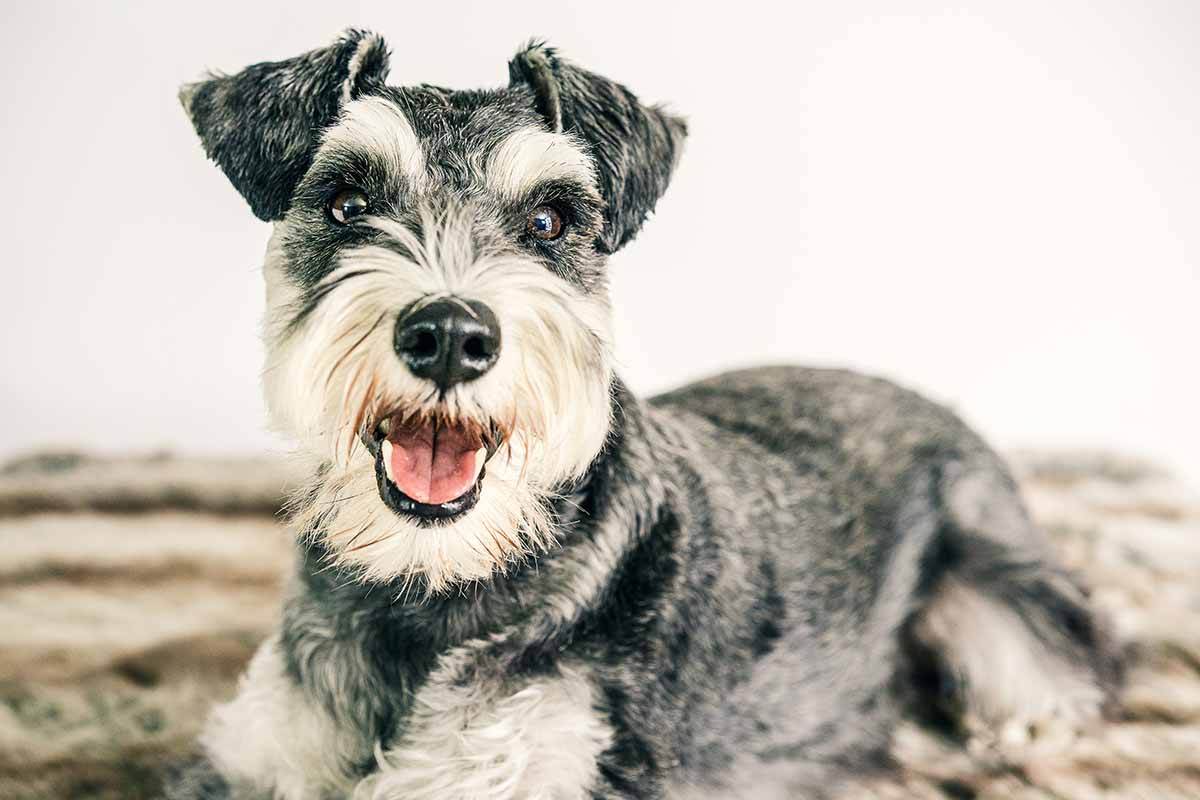
Don’t let their small stature fool you. Miniature Schnauzers are big personalities in compact packages. These intelligent, energetic dogs are natural watchdogs with a playful, protective streak. Schnauzers excel in agility and obedience training, making them ideal for active owners seeking a canine training partner. Their wiry coat requires regular brushing and professional clipping to keep it looking sharp.
- Temperament: Miniature Schnauzers are known for their spirited and alert temperament, making them excellent watchdogs and loyal companions. They are intelligent, playful, and eager to please, making them adaptable to various living situations and great family pets. While they can be feisty and assertive, proper training and socialization help channel their energy into positive behaviors, fostering a loving and harmonious relationship with their owners.
- Exercise: Miniature Schnauzers should include daily walks, interactive play sessions, and mentally stimulating activities like obedience training or agility exercises. These energetic dogs thrive on regular physical activity to prevent boredom and maintain their health. Engaging them in active games and providing opportunities for socialization with other dogs also contributes to their overall well-being and happiness.
- Grooming: Miniature Schnauzers are not “wash and wear” dogs. They require grooming every 4-6 weeks. This breed requires regular brushing and combing, nail cutting, ear cleaning, and clipping or hand stripping.
Fun Fact: They were originally bred in Germany to work as efficient rat catchers on farms. Their distinctive bushy eyebrows and beard aren’t just for looks—they serve a practical purpose by helping to protect their face from dirt and debris while they’re working. Despite their small size, Miniature Schnauzers possess a big personality and make excellent watchdogs and loyal companions.
Pomeranian
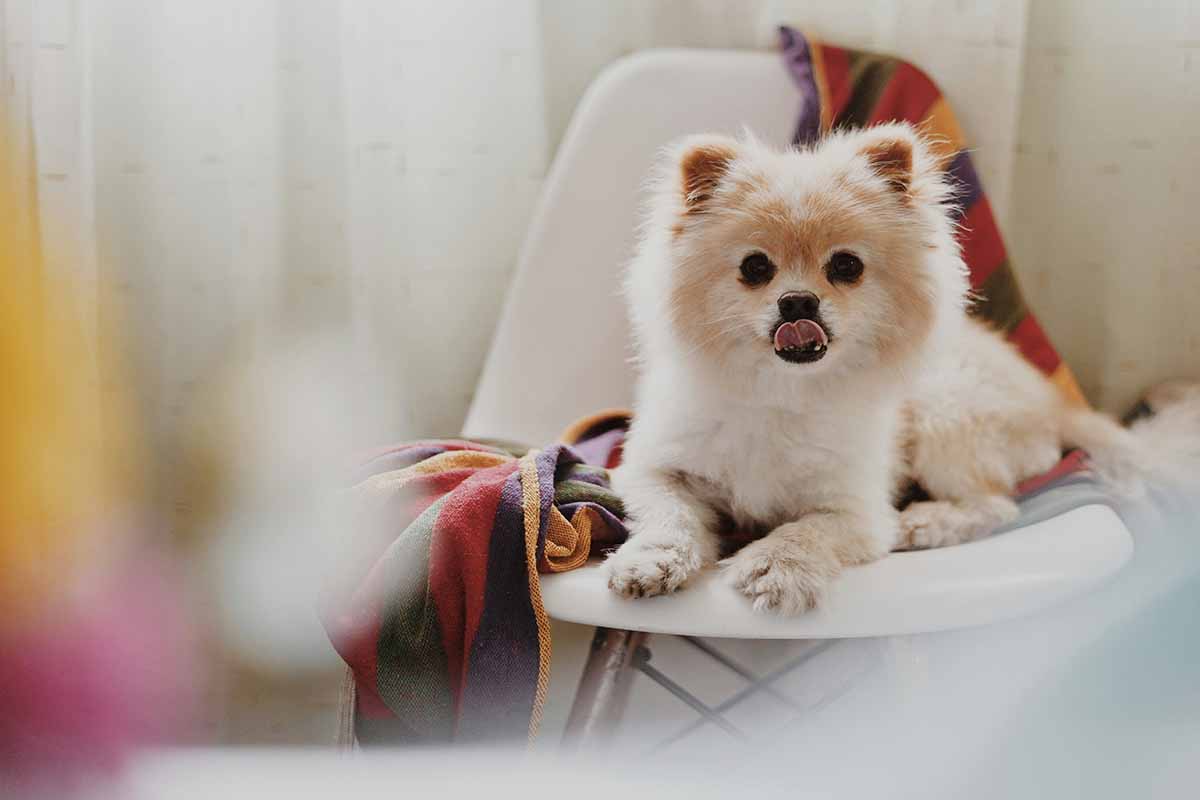
A pint-sized ball of fluff with a regal attitude, the Pomeranian is a head-turner with a feisty spirit. These tiny titans are surprisingly agile and energetic, often mistaken for larger breeds due to their confident demeanor. Pomeranians are fiercely loyal to their humans and make excellent apartment companions, but their independent streak requires consistent, positive reinforcement training.
- Temperament: Pomeranians are lively and affectionate companions, known for their bold and confident demeanor despite their small size. They often exhibit intelligence and a strong sense of loyalty to their owners, making them excellent family pets. While they can be vocal at times, Pomeranians are generally friendly, outgoing, and eager to interact with people and other pets.
- Exercise: An adult Pomeranian needs, on average, about 50 minutes of exercise per day.This can be divided up into small daily walks and play sessions. Remember that Pomeranians are prone to joint problems, so avoiding high-impact activities that place undue strain on their joints is critical.
- Grooming: Pomeranians should be brushed every day and shampooed and conditioned at least once a week. If you do not groom your Pomeranian properly, their fur can become dry and irritated, and they may develop skin problems. Moreover, mats and tangles can cause your Pomeranian discomfort and even lead to skin infections.
Fun Fact: These small dog breeds typically weigh around 7 to 10 pounds, but they’re descended from big sled dogs. Hard to believe, right? Pomeranians weren’t always so little. They used to weigh as much as 20 to 30 pounds before being bred down in size by Queen Victoria of England.
Chihuahua
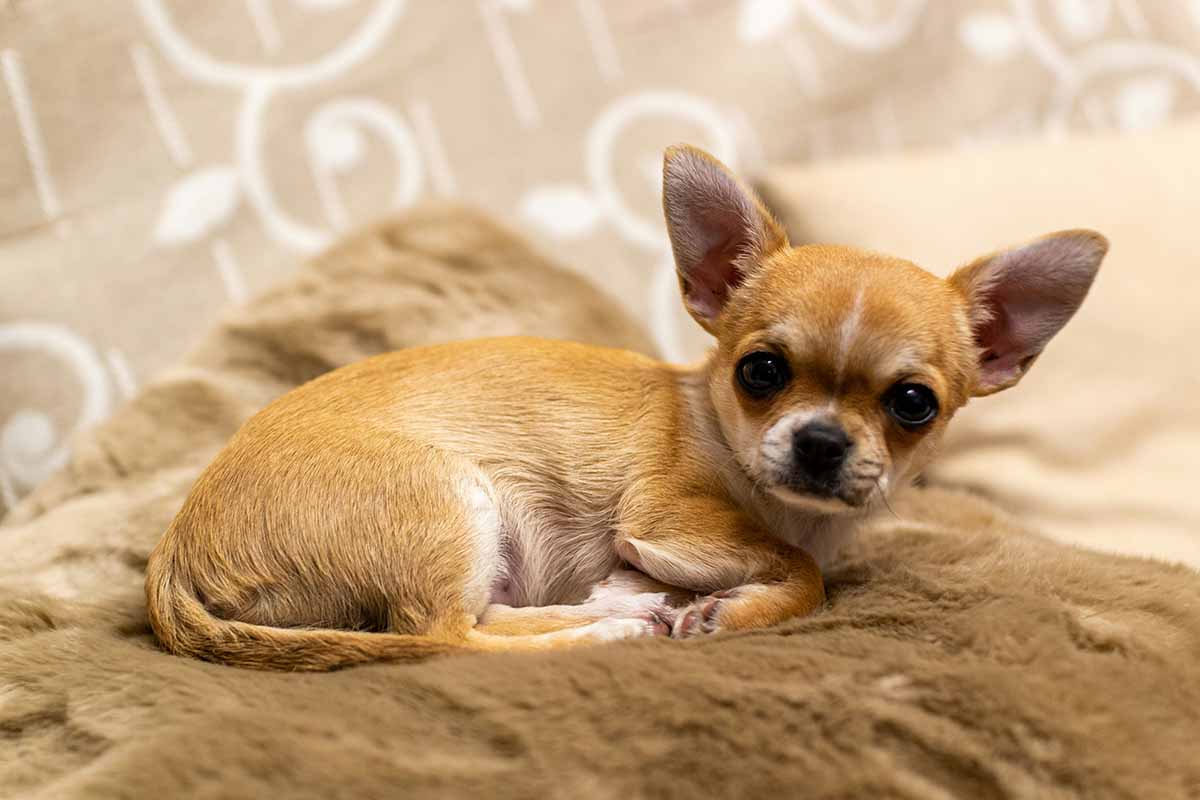
Don’t underestimate the mighty Chihuahua – this pocket-sized powerhouse packs a big personality into a tiny frame. Chihuahuas are fiercely loyal and surprisingly adaptable, thriving in both bustling cities and quiet suburbs. Their playful nature and affectionate snuggles make them cherished companions, but their independent streak necessitates patient, reward-based training.
- Temperament: Chihuahuas are known for their bold and confident personalities, often displaying strong loyalty to their owners. Despite their small size, they possess a feisty and spirited demeanor, making them fearless companions. While they can be wary of strangers, Chihuahuas are affectionate and thrive on close bonds with their family members.
- Exercise: They typically require around 30 minutes to 1 hour of exercise per day. This can be achieved through short walks, play sessions, and interactive toys. Keep in mind that Chihuahuas are small dogs with sensitive bones, so avoid putting them under too much strain or engaging in high-impact activities that could cause injury.
- Grooming: Grooming for Chihuahuas is relatively low maintenance due to their short coats, requiring only occasional brushing to remove loose hair. They may need regular dental care, including teeth brushing, to prevent dental issues common in small breeds. Additionally, trimming their nails and cleaning their ears regularly helps keep them comfortable and healthy.
Fun Fact: They’re Named After the Mexican State of Chihuahua. The modern Chihuahua is most likely a mix between the Techichi, an old breed of Central and South America, and small, hairless canines from Asia. Images of dogs resembling the Chihuahua appear on artifacts of civilizations around the globe.
Papillon
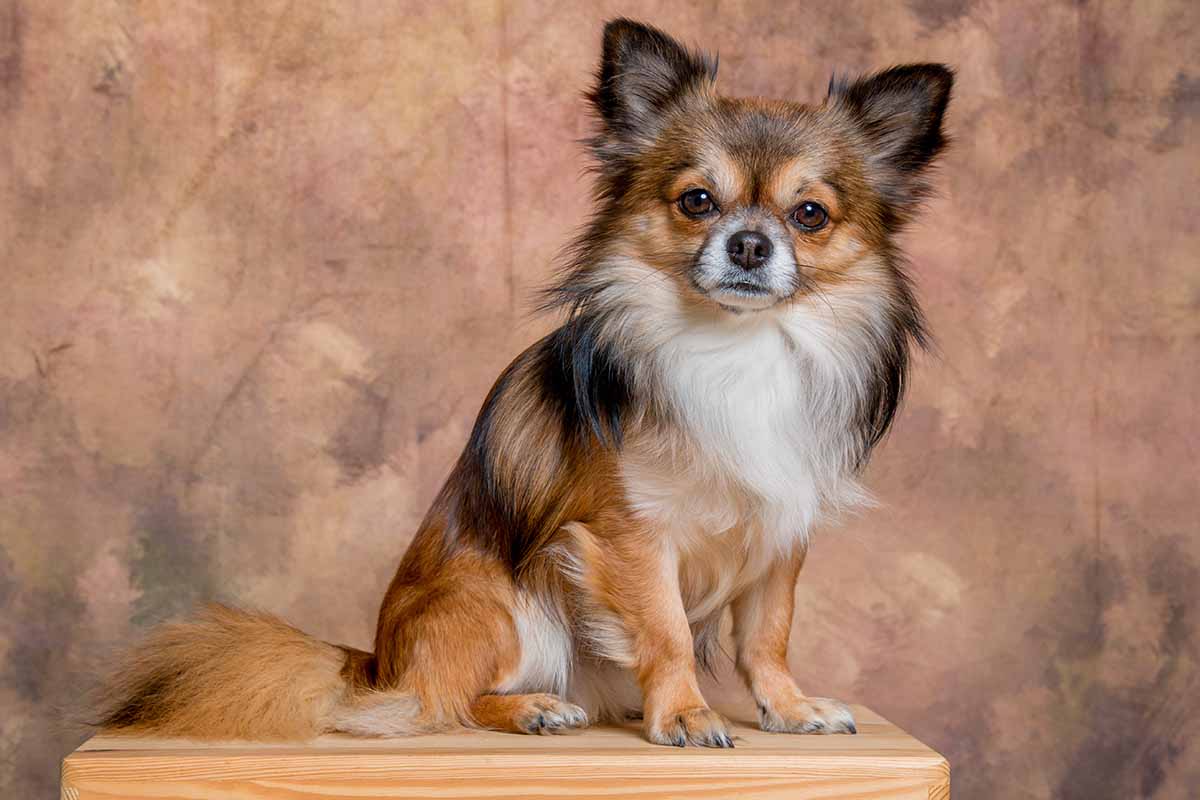
Graceful elegance meets playful charm in the Papillon, a butterfly-eared wonder with a big heart. These intelligent, energetic dogs excel in agility and obedience training, making them ideal for active owners seeking a canine partner in crime. Papillons are relatively low-maintenance in terms of grooming, but their long, flowing ears require regular cleaning to prevent infections.
- Temperament: Papillons are known for their lively and outgoing temperament, often described as happy and alert companions. They are intelligent dogs with a curious nature, always eager to learn new tricks and engage in interactive play. Despite their small size, Papillons are confident and social dogs, enjoying the company of both humans and other pets alike.
- Exercise: Daily walks, playtime in a securely gated area, and engaging games are excellent ways to meet their fitness needs. Papillons appreciate cerebral stimulation, so activities like puzzle toys, obedience training, and agility can help them stay cognitively bright and satisfied.
- Grooming: The Papillon requires regular bathing and brushing. Depending on lifestyle, this pleasant small dog can be bathed as frequently as once a week or no more than once every six weeks, with a happy medium falling somewhere in between. The most important thing is to keep your skin and coat healthy.
Fun Fact: The Papillon, sometimes known as the “butterfly dog” due to its distinctive ear shape (“papillon” means butterfly in French), is one of the oldest toy breeds. Originally known as the Dwarf Spaniel or Continental Toy Spaniel, the Papillon appeared in artwork as early as the 16th century.
Italian Greyhound
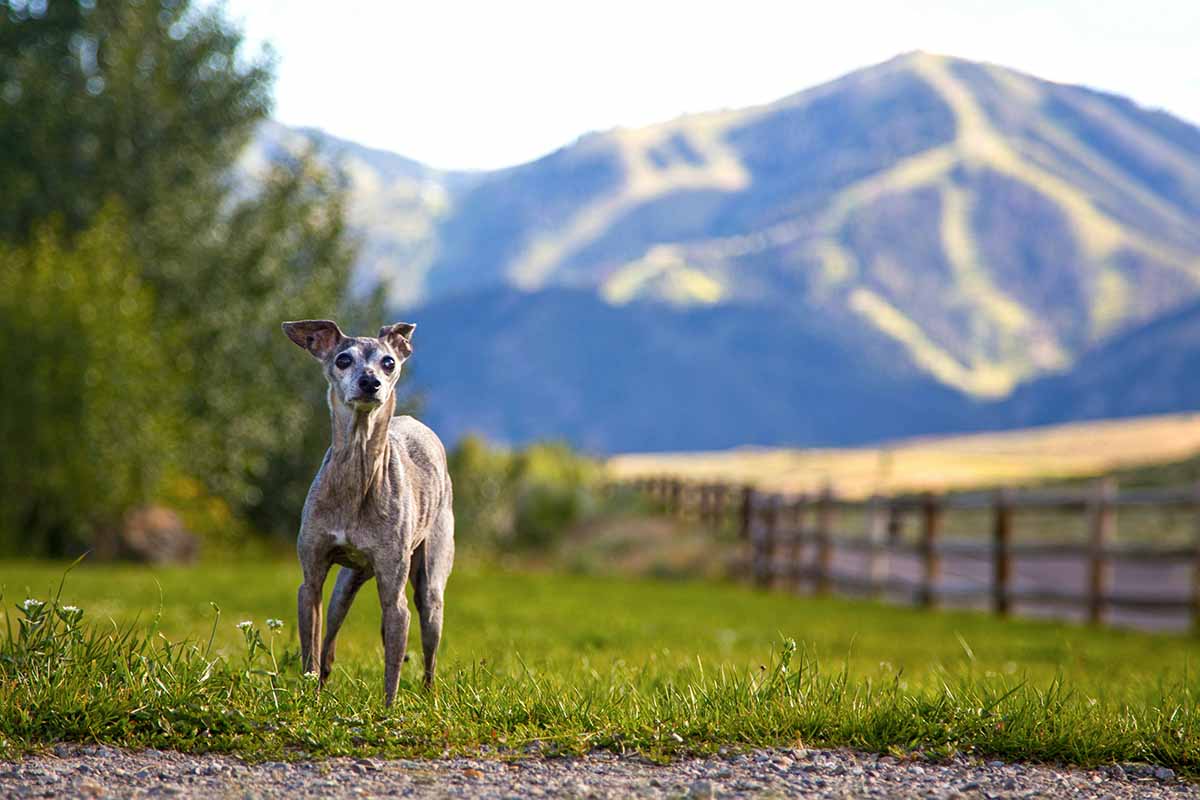
Imagine a sleek, windhound in miniature form – that’s the Italian Greyhound. These graceful speedsters are surprisingly affectionate and love spending time curled up on laps. While their gentle nature makes them suitable for calm households, their bursts of energy require occasional sprints in a safe, enclosed space. Italian Greyhounds are low-maintenance in terms of grooming, but their delicate build necessitates extra care and supervision.
- Temperament: Italian Greyhounds are known for their affectionate and gentle nature, often forming strong bonds with their owners. They possess a sensitive temperament and thrive on companionship, preferring to be close to their loved ones. Despite their small size, they can be surprisingly playful and energetic, enjoying both indoor and outdoor activities with their family.
- Exercise: Although Italian Greyhounds are classified as toy dogs, they do require a fair amount of exercise. Their energetic nature means that they love nothing more than zooming around the park. They’ll require around 45 minutes – 1 hour of physical activity every day to make sure that their exercise needs are met.
- Grooming: Since Italian Greyhounds are a short-haired breed, grooming in a traditional sense, by brushing their hair on a regular basis, isn’t needed. However, like any dog they do need bathing, their nails need kept short, and glands sometimes expressed, squeezed, or drained.
Fun Fact: The Italian Greyhound is believed to have originated more than 2000 years ago in the Mediterranean basin, possibly in the countries now known as Greece & Turkey. The Italian Greyhound was frequently included in Renaissance paintings by such famed artists as Giotto, Carpaccio, Memling, Van der Weyden, David, and Bosch.
Remember, every dog is an individual, and responsible pet ownership involves research, commitment, and training. Consider your lifestyle, living space, and energy level before welcoming a furry friend into your home. With love, patience, and the right match, your small dog companion will enrich your life with boundless joy and unconditional love. So, open your heart to the pitter-patter of tiny paws and the soft, warm gaze of your canine confidant.
Conclusion
Choosing the right small dog breeds is a significant decision that requires careful consideration and research. By understanding your lifestyle and preferences, you can find the perfect furry companion to enrich your life with love and joy.


